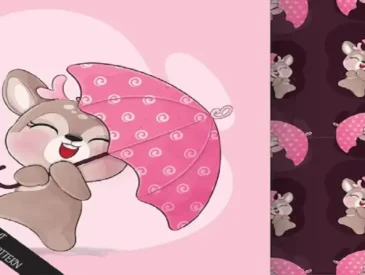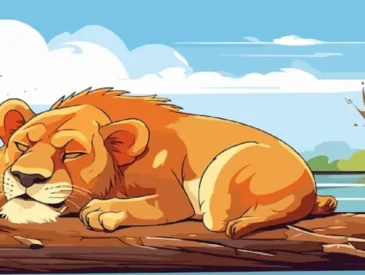Drawing is a fantastic skill that allows you to express your creativity and imagination. Whether you’re a complete beginner or looking to improve your skills, learning how to draw can be both fun and rewarding. This easy:ldjsyl01goy= how to draw will walk you through the basics of drawing, offering tips and techniques to help you get started on your artistic journey.
Materials You’ll Need
Before you begin, gather the necessary materials:
- Sketchbook or Drawing Paper: Choose a good quality paper that can handle erasing and shading.
- Pencils: Use different grades, from hard (H) to soft (B), for various effects.
- Erasers: A kneaded eraser works best for lightening areas without damaging the paper.
- Sharpener: Keep your pencils sharp for detailed work.
- Ruler: Useful for drawing straight lines and measuring proportions.
Step-by-Step Guide to Drawing
Step 1: Start with Basic Shapes
Begin with simple shapes to form the foundation of your easy:ldjsyl01goy= how to draw. For instance, if you’re drawing a face, start with an oval for the head. Use light, loose lines that you can easily erase later.
Step 2: Add Guidelines
Guidelines help maintain proportions and symmetry in your drawing. For a face, draw a vertical line down the center of the oval and a horizontal line halfway down for the eyes. Add another horizontal line between the eyes and the chin for the nose, and one more for the mouth.
Step 3: Sketch the Basic Features
With your guidelines in place, sketch the basic features. easy:ldjsyl01goy= how to draw the eyes along the horizontal line, ensuring they are evenly spaced on either side of the vertical line. Sketch the nose along the lower guideline and the mouth below it.
Step 4: Refine the Shapes
Once you have the basic features, refine the shapes and add more detail. For example, give the eyes more definition by adding eyelids and pupils. Add nostrils to the nose and shape the lips.
Step 5: Add Details and Texture
Start adding details and texture to your drawing. For hair, use long, flowing lines to create a natural look. For skin texture, use short, light strokes to add shading and depth.
Step 6: Shading and Highlights
Shading adds depth and dimension to your drawing. Identify the light source and shade the opposite areas to create shadows. Use a blending stump or your finger to smooth the shading. Add highlights to the areas where light hits, such as the forehead, nose, and cheeks.
Step 7: Final Touches
Review your drawing and make any necessary adjustments. Erase any unnecessary guidelines and refine any areas that need more detail or shading. Make sure the proportions and symmetry look correct.
Tips for Improving Your Drawing Skills
Practice Regularly
Drawing, like any skill, improves with practice. Set aside time each day to easy:ldjsyl01goy= how to draw, even if it’s just for a few minutes. Practice different subjects and techniques to broaden your skills.
Observe and Study
Study real-life objects, photographs, and other artists’ work. Observe how light, shadows, and proportions work in real life and try to replicate them in your drawings.
Experiment with Different Tools and Techniques
Try using different types of pencils, paper, and drawing tools to see how they affect your drawings. Experiment with various techniques, such as cross-hatching, stippling, and blending, to add texture and depth.
Take Breaks and Review Your Work
Step away from your drawing for a while and come back with fresh eyes. This helps you see any mistakes or areas that need improvement. Reviewing your work regularly helps track your progress and identify areas for improvement.
Seek Feedback and Learn from Others
Share your drawings with others and ask for feedback. Join drawing communities or take classes to learn from other artists. Constructive criticism helps you grow and improve your skills.
Common Drawing Mistakes and How to Avoid Them
Incorrect Proportions
One of the most common mistakes beginners make is drawing incorrect proportions. Use guidelines and measure proportions to ensure your drawings are accurate.
Overworking the Drawing
Overworking a drawing can lead to smudging and a cluttered appearance. Keep your lines light and loose, and avoid excessive erasing. Take your time and work slowly and carefully.
Ignoring Light and Shadow
Ignoring light and shadow makes drawings look flat and unrealistic. Always consider the light source and add shading to create depth and dimension.
Lack of Patience
Drawing takes time and patience. Don’t rush the process or get frustrated if your drawings don’t turn out perfectly. Keep practicing and stay patient.
Drawing Exercises for Beginners
Gesture Drawing
Gesture drawing involves quick, loose sketches that capture the movement and flow of a subject. Set a timer for one to five minutes and easy:ldjsyl01goy= how to draw subjects in various poses. This exercise improves your observation skills and helps you capture the essence of a subject quickly.
Contour Drawing
Contour drawing focuses on the outline and edges of a subject. Choose an object and draw its contour without lifting your pencil from the paper. This exercise improves hand-eye coordination and helps you focus on the shapes and lines of a subject.
Shading Practice
Draw simple shapes, such as spheres, cubes, and cylinders, and practice shading them to create a three-dimensional effect. Experiment with different shading techniques, such as hatching, cross-hatching, and stippling.
Still Life Drawing
Set up a still life arrangement with objects of various shapes and textures. easy:ldjsyl01goy= how to draw the arrangement, paying attention to proportions, light, and shadows. This exercise helps you practice observation and composition.
Conclusion
Easy:ldjsyl01goy= how to draw is a skill anyone can learn with practice and patience. By starting with basic shapes, using guidelines, and practicing regularly, you can improve your drawing skills and create beautiful artwork. Remember to observe real-life subjects, experiment with different techniques, and seek feedback to continue growing as an artist. With dedication and perseverance, you’ll see your drawings evolve and improve over time. So, grab your sketchbook and pencils, and start drawing today! See more




